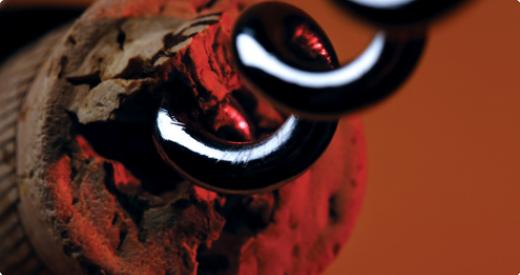
If “to decant or not to decant” is one of the classic dilemmas among wine drinkers, “cork or screw cap” would be that of the producers. Going back 60 years in modern wine history, screw caps for wine bottles were first manufactured in 1959 by French manufacturer Le Bouchon Mecanique (now Alcan) to combat the problem of cork taint. At the turn of the century, New Zealand established theInternational Screwcap Initiative (ISI), which pioneers the research and the promotion of screw cap wine seals.
The initiative celebrated their 10th Anniversary last year. There has been a dramatic shift among New World wine producers converting from corks to screw caps in the past decade. Screw caps account for 43-percent of wine bottle seals every year compared to only 2-percent ten years ago. New Zealandleads the movementwith over 90-percent of wine bottles sealed by screw caps.
The ISI made an important breakthrough when Michel Laroche, a leading French wine producer, joined the initiative. With the movement backed by its first Old World premium wine producer, various reputable French producers have since converted to screw caps including a group of Alsace producers and France’s third largest wine groupBoisset Wines. Chateau Margaux’s Managing Director Paul Pontallier made the news recently when he announced that the chateau wasconsidering the use of screw capsfor its second wine, Pavillon Rouge, if further tests prove that screw caps do indeed yield consistent and superior results.
Whether the screw cap is a preferable alternative is still up for debate, a hypothesis which has undergone sundry scientific tests. One contentious issue is whether the screw cap allows for bottle ageing—especially for red wine. New Zealand and Australian winemakers counter this argument by referencingpositive resultsfrom experimental tastings of screw capped red wines of 10 years or older. Arecent comparative tastingof Domaine Laroche Chablis in New York showed that participants had a slight preference for wines with alternative closures over the same wines bottled with cork. A series of comparative tastings held by Laroche in 2005, 2007 and 2011 seem to suggest that it is all simply a matter of taste and preference. The perception of wines sealed with cork is that they appear more evolved while those with screw caps have a fresher touch.
Cork advocates argue that the problem of cork taint has become marginal owing to modern science and improved cork quality. James Laube of Wine Spectator observed a lower “corked” bottle rate in their blind tasting of roughly 3000 cork-sealed wines last year. Contamination has declined dramatically from 9.5-percent five years ago to 3.8-percent last year according toWine Spectator. In other words, one would have likely encountered a corked bottle in every case five years ago versus the one corked bottle within two cases today. Asurveyconducted two years ago by Dr. Butzke, professor of oenology at Purdue University, found that corked bottle rate has dropped below 1-percent.
In spite of its progress in the past decade, screw caps still face fierce marketing challenges. Natural corks have traditionally been associated with prestigious, premium wines. The ceremony in uncorking a bottle is very much part of the aesthetic imagination of wine appreciation. In Asian markets like China and Hong Kong, wine drinkers still establish a link between natural cork and quality. Leading national wine producers such as Changyu, Great Wall and Dynasty also opt for a traditional approach in their premium level wines, sealing them with natural corks. In a casual survey conducted among active wine drinkers in China, Asian Palate asked whether they would support the conversion of Chateau’s Margaux second wine Pavillon Rouge to screw cap closures. More than half of respondents were against the initiatives while 41-percent were for screw caps.
The cork or screw cap debate remains unresolved and will likely carry on for decades to come. Resolution of this issue will only come about with better cork quality or wider acceptance of alternative closures. With hope, both will make cork taint a thing of the past.









